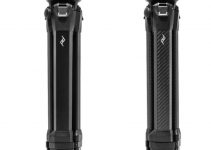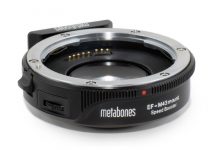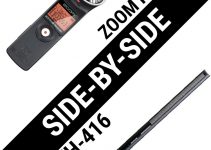Released as a DUST online exclusive, 17-minute short film Satori [Awakening] is a science fiction adventure with a difference. British DP-turned-director Adam K Batchelor didn’t just want to create a high-concept sci-fi.
For his directorial debut, he wanted to lean into a storytelling-focussed approach, using his filmmaking to convey the importance of environmental sustainability. Starring Jane Perry (Phantom Thread, The Beyond, World War Z) and Mark Holden (The Infiltrator, Captain Phillips), Satori [Awakening] was lensed on the URSA Mini Pro 4.6K, with a gimbal-mounted Sony α7S used for additional shots.
Like all indie shorts, this project was a true labor of love for Adam who wrote, directed, and edited the short film. He was able to rely on his years of experience as a cinematographer collaborating with filmmaker Hasraf ‘HaZ’ Dulull’s on projects including I.R.I.S, SYNC, and The Beyond.
“I was on a tight budget, so I had to work smartly when photographing the locations to achieve an otherworldly look,” Adam begins. “Our mission was to create a post-apocalyptic future, where nature rules. I envisaged a world rapidly overgrown by dense jungle. Our two main characters are survivors of a downed reconnaissance ship, who start to explore what earth has become.”
To create this lush environment, the main shoot took place in Gloucester’s Puzzlewood forest. The forest provided a visually stunning location but challenged the crew in multiple ways.
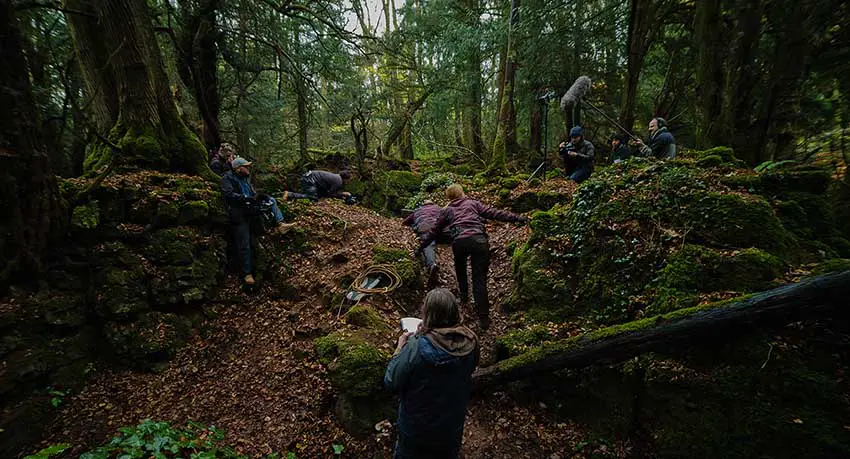
“To make the most of the environment, I wanted to capture the film at the highest quality available. That was open gate 4.6K raw at 24fps,” Adam continues. “My original plan was to shoot full 16:9 or a slightly cropped 2.00:1 as I wanted the height in the image to really show off the surroundings.
Unfortunately, test shoots revealed that a tighter cinematic crop of 2.35:1 was required. This was because there are a lot of s handrails for safety and steps in Puzzlewood that became very difficult to frame out. The new aspect ratio became our hiding place for these.”
For the action scenes, Adam selected a 45-degree shutter angle at 22fps, which produced a slight stuttering effect when played back at 24fps. “This looked great when we had leaves or debris falling into frame,” he adds.
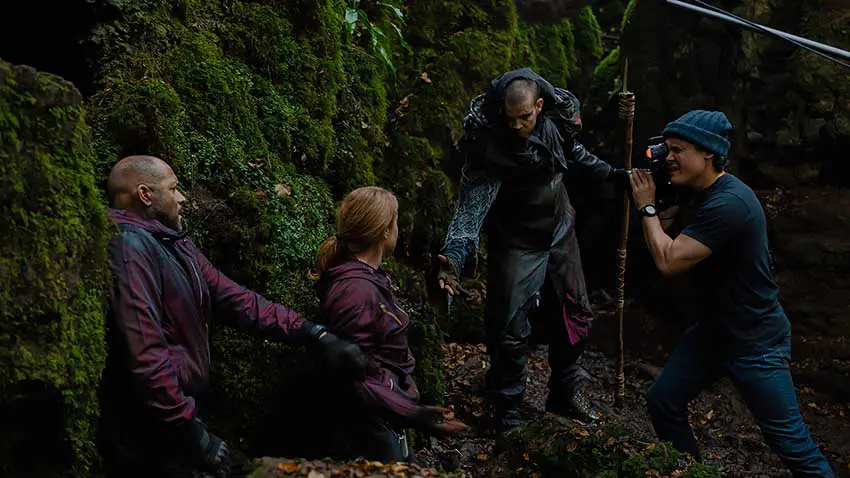
Adam had limited daylight, and only two days to complete the entirety of the main shoot. Using sliders, LED panel lights, reflectors, and a gimbal sourced from their own personal kit, he and his small crew set up three URSA Mini Pros to give them triangle coverage of the dialogue scenes and maximize what they got each take.
“To claw back time, all the more technically complex shots such as push-ins with a slider had to be scrapped,” Adam reveals. “Luckily for these kinds of shots, I could take advantage of the extra resolution the 4.6K affords, and digitally zoom once in post. This allowed us to save time by keeping the cameras on sticks or on the shoulder.” For additional gimbal shots, Adam used the Sony α7S with a color chart to get the best possible match in post.
While in post, Adam also took the decision to go back to shoot more footage for the opening sequence. “I wanted to have more set-up. The audience needed better insight into the characters’ mission and their power dynamic,” he explains.“By this point, Blackmagic RAW was available, and wow, what a difference that made.”
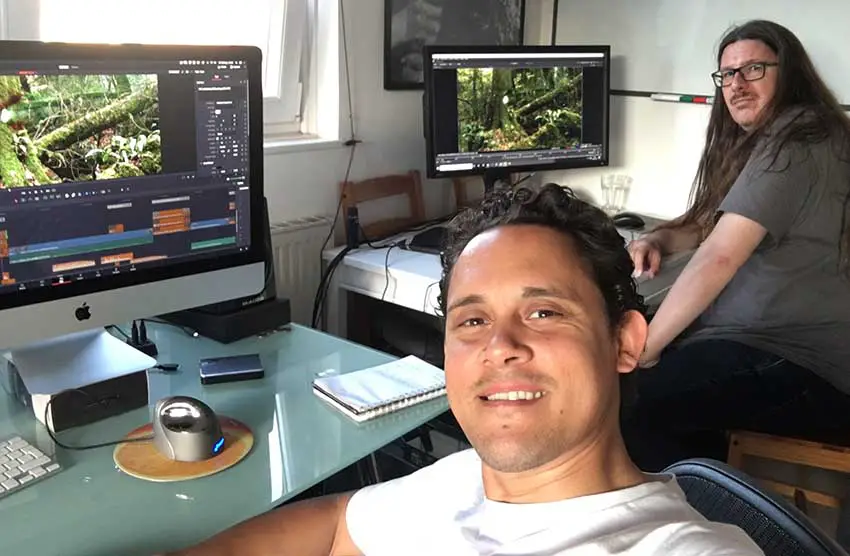
“Throughout the majority of our main production at Puzzlewood we were using CinemaDNG, which would cause data to pile up fast. To counteract this, I invested in a 6TB thunderbolt 3 raid drive to reduce offload times as much as possible. It worked, but there were a lot of memory card runs to our makeshift DIT area during filming. This did not help with our already tight schedule,” Adam continues.
“When shooting our additional opening scenes with the URSA Mini 4.6K in BRAW at an 8:1constant bit rate, the difference was amazing. The reduced file sizes meant we were able to record all our footage on the memory cards we had and save time by doing just one data dump at the end of the night.”
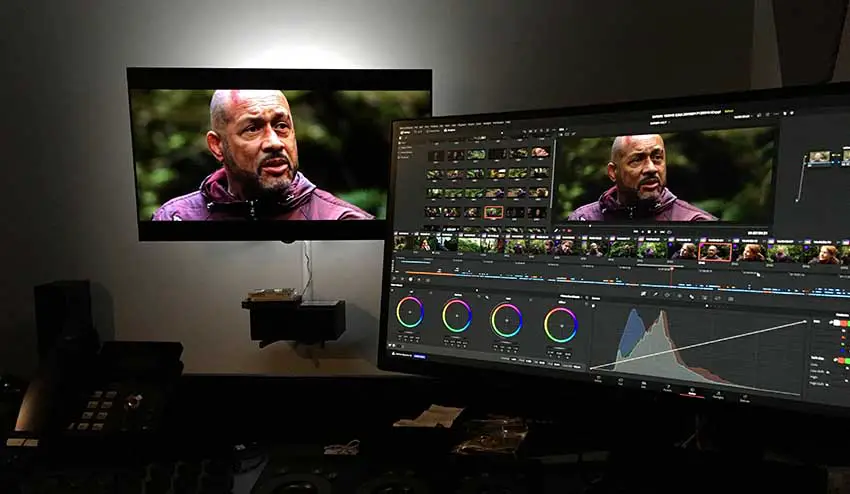
This translated through to Adam’s edit and grade which were delivered in DaVinci Resolve. “I had become used to generating optimized media for the CinemaDNG files and the large EXR files used for VFX shots. Adding the BRAW files was so much quicker. It felt like working with regular ProRes files.
I had smooth playback straight off the card while still having that high image quality from the sensor. One of our additional scenes shot in BRAW was our dropship scene, which was filmed in the back of a dark removal van. We relied on a single light source and the glow coming off a television screen. It pushed both the sensor and the codec, and they held up with minimal noise in the final image.
“Initially I dismissed the idea of Satori as I thought it was too ambitious to be made as a self-funded project,” Adam continues, revealing the film has already broken past half a million views on DUST’s platforms. “But Haz convinced me it could be done. By thinking outside the box, assembling a great team, being flexible and maintaining a bucket load of resilience, I was able to make a film that I would have wanted to see.
It’s a true milestone: currently, it is the best example of what I can dream up and create independently, and it sets the standard for my future projects. I’ve learned so much from the entire process and it has made me excited to roll straight into the next film.”
[source: Adam K Batchelor]
Disclaimer: As an Amazon Associate partner and participant in B&H and Adorama Affiliate programmes, we earn a small comission from each purchase made through the affiliate links listed above at no additional cost to you.
Claim your copy of DAVINCI RESOLVE - SIMPLIFIED COURSE with 50% off! Get Instant Access!



